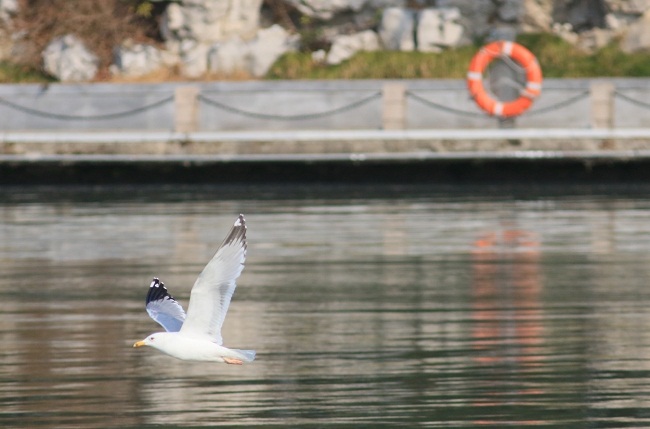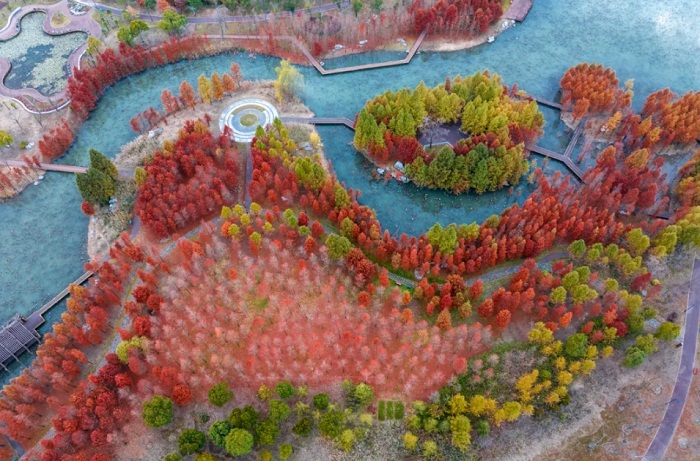Seagulls reappear in Haohe River

A seagull is seen flying over the Haohe River. [Photo provided to en.nantong.gov.cn]
With the continuous improvement of the natural environment in Nantong, Jiangsu province, the variety and number of birds around the Haohe River have been steadily increasing in recent years.
Birds such as egrets and coots have become regular visitors here. However, what is most surprising is that the long-lost seagull has once again appeared in the Haohe River.
Jia Taogen, a renowned photographer in Nantong, began devoting all his passion and energy to capturing wild birds after retiring. He recalled that in the 1950s, during the cold winter, flocks of seagulls could always be seen freely soaring in the sky above the Haohe River. However, this beautiful sight disappeared decades ago.

Jia Taogen takes photos of birds along the Haohe River. [Photo provided to en.nantong.gov.cn]
Jia said that in the 1970s, the river suffered severe pollution, causing fish and shrimp to nearly disappear and the number of water birds to sharply decline. By the 1990s, with the improvement of the water quality, more water birds returned to the river, but the seagulls never made an appearance. He had been photographing birds for 30 years, searching for traces of various birds, but he never saw seagulls.
However, just these past two days, while taking a walk near the Haohe River, Jia unexpectedly came across these long-lost "old friends". The seagulls sometimes soar through the sky, their white feathers shining brightly in the sunlight; sometimes they dive down to the water, skillfully catching food, bringing new life to the Haohe River.
The seagulls flew down from distant Siberia to spend the winter, and they have very strict requirements for their habitat. Their appearance is a testament to the improvement of the natural environment in Nantong, as well as to the high water quality of the Haohe River.





 TRANSPORTATION
TRANSPORTATION EDUCATION
EDUCATION HEALTHCARE
HEALTHCARE USEFUL NUMBERS
USEFUL NUMBERS